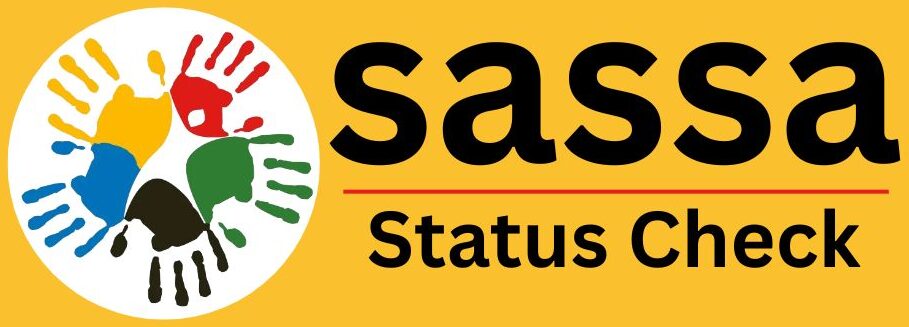New SASSA ID Rules Start May 5 – Beneficiaries Of Grants Affected?

New SASSA ID Rules Start May 5. In a major update to improve security and reduce fraud in the social grant system, the South African Social Security Agency (SASSA) is rolling out new identity verification measures that will significantly impact how some beneficiaries apply for and receive grants. Starting May 5, New SASSA ID Rules will require biometric enrolment for clients who do not use the standard 13-digit South African ID number.
This move is part of a broader effort to enhance the integrity of the system and ensure that only eligible beneficiaries receive government assistance. Here’s everything you need to know about the new process, who it affects, and how you can prepare.
What Are the New SASSA ID Rules?
Effective from May 5, all new SASSA grant applicants and existing beneficiaries who use alternative identification methods—such as sworn affidavits or Department of Home Affairs ID application receipts—must now undergo a mandatory biometric enrolment and identity verification process.
This biometric enrolment process includes:
- Fingerprint scans
- Facial recognition
- Cross-verification of personal details
The goal is to confirm the identity of the person applying for or receiving the grant, eliminating any opportunity for identity misrepresentation.
Who Will Be Affected By the New Biometric Identity Verification Process?
While these new SASSA ID rules will not affect everyone, they specifically target certain groups to tighten verification protocols. Below is a breakdown of individuals who will be required to undergo biometric identity verification:
| Affected Group | Reason for Biometric Enrolment |
|---|---|
| New Applicants using affidavits or ID application slips | Lack of a valid 13-digit South African ID |
| Existing beneficiaries updating personal details | To verify updated information |
| Individuals collecting grants on behalf of others | To confirm their identity and relationship to the recipient |
This proactive strategy, implemented under Regulation 13(1) of the Social Assistance Act, seeks to modernize and safeguard the social grant distribution system.
Why Did SASSA Introduce Biometric Enrolment?
According to Paseka Letsatsi, SASSA spokesperson, the shift to biometric enrolment is a necessary response to persistent fraud and abuse within the grant system.
“This initiative is a proactive measure aimed at enhancing security, improving the integrity of our systems, and preventing potentially fraudulent activities related to identity misrepresentation.”
Fraudulent claims have plagued SASSA in the past, often through the use of false documentation. By introducing biometric enrolment, the agency aims to authenticate identities more accurately, ensuring only the rightful individuals receive aid.
SITA Partnership and Training for Biometric Data Collection
To ensure a smooth rollout, SASSA has partnered with the State Information Technology Agency (SITA). SITA will be responsible for training a group of designated personnel known as “super-users.”
Who are SASSA super-users?
Super-users are trained staff members responsible for managing the biometric data collection process. Once trained, they will pass on this knowledge to regional SASSA employees across the country.
This step ensures that:
- Every SASSA office has the required expertise.
- There is uniformity in how biometric verification is conducted.
- Beneficiaries experience minimal disruption during enrolment.
SASSA Gold Cards vs Postbank Black Cards
The announcement of the new biometric rules came shortly after a controversial suspension involving Postbank’s black SASSA cards.
Originally, Postbank intended to phase out the current SASSA gold cards and replace them with black SASSA cards. However, the South African Reserve Bank (SARB) ordered a halt to the rollout due to serious concerns.
Why was the rollout halted?
- Security vulnerabilities in the Postbank system
- Poor communication strategies with beneficiaries
- Limited banking infrastructure, raising fears of payment delays
Despite the suspension, Postbank CEO Nikki Mbengashe assured the public that both black and gold SASSA cards remain functional. Beneficiaries can continue using their gold cards without disruption—even after May 31.
“Beneficiaries who have not yet switched to black cards can still use their gold cards even after May 31. They will have uninterrupted access to social-grant payments,” Mbengashe told eNCA.
Differences Between Gold and Black SASSA Cards
| Feature | SASSA Gold Card | Postbank Black Card |
|---|---|---|
| Issuer | SASSA/Postbank | Postbank |
| Status | Fully functional | Rollout temporarily suspended |
| Banking Infrastructure | Nationwide | Limited coverage |
| Security Issues | Fewer concerns | Under review by SARB |
For now, all SASSA grant recipients are encouraged to hold on to their gold cards until a new directive is issued by SARB.
SASSA Vision: Faster Payments and Broader Reach
During a Parliamentary briefing, SASSA Acting CEO Themba Matlou unveiled a bold plan to automate and streamline the grant approval process.
- Reducing the grant processing time from seven days to one day
- Expanding the number of beneficiaries from 19 million to 21 million during the current financial year
- Implementing automated verification systems to reduce fraud and administrative delays
This transformation aims to not only strengthen the system but also bring faster and more reliable support to millions of vulnerable South Africans.
What Should Beneficiaries Do Now?
If you are currently receiving a SASSA grant or plan to apply soon, here’s what you should do to stay compliant with the new SASSA ID rules:
For New Applicants Without a 13-Digit ID:
- Be prepared for biometric enrolment at the time of application.
- Bring all supporting documents, including affidavits or Home Affairs receipts.
For Existing Beneficiaries:
- If your personal information is due for an update, you will need to complete biometric verification.
- Continue using your SASSA gold card until further notice.
For Those Collecting on Behalf of Others:
- You will need to provide proof of relationship and undergo biometric scans to continue collecting grants.
The Importance of Identity Verification in Social Welfare
Ensuring that government aid reaches its rightful recipients is crucial, especially in a country where millions depend on social grants for survival.
- Prevents fraudulent claims
- Speeds up grant processing
- Protects vulnerable individuals from identity theft
- Improves public trust in the SASSA system
As digital transformation becomes a growing trend across government departments, SASSA’s efforts mark a significant step toward a more secure and efficient welfare system.
Conclusion
The New SASSA ID Rules, effective from May 5, represent a bold shift toward modernizing South Africa’s grant distribution process. While the introduction of biometric enrolment and identity verification may initially seem daunting, it promises long-term benefits for the system and its millions of users.






